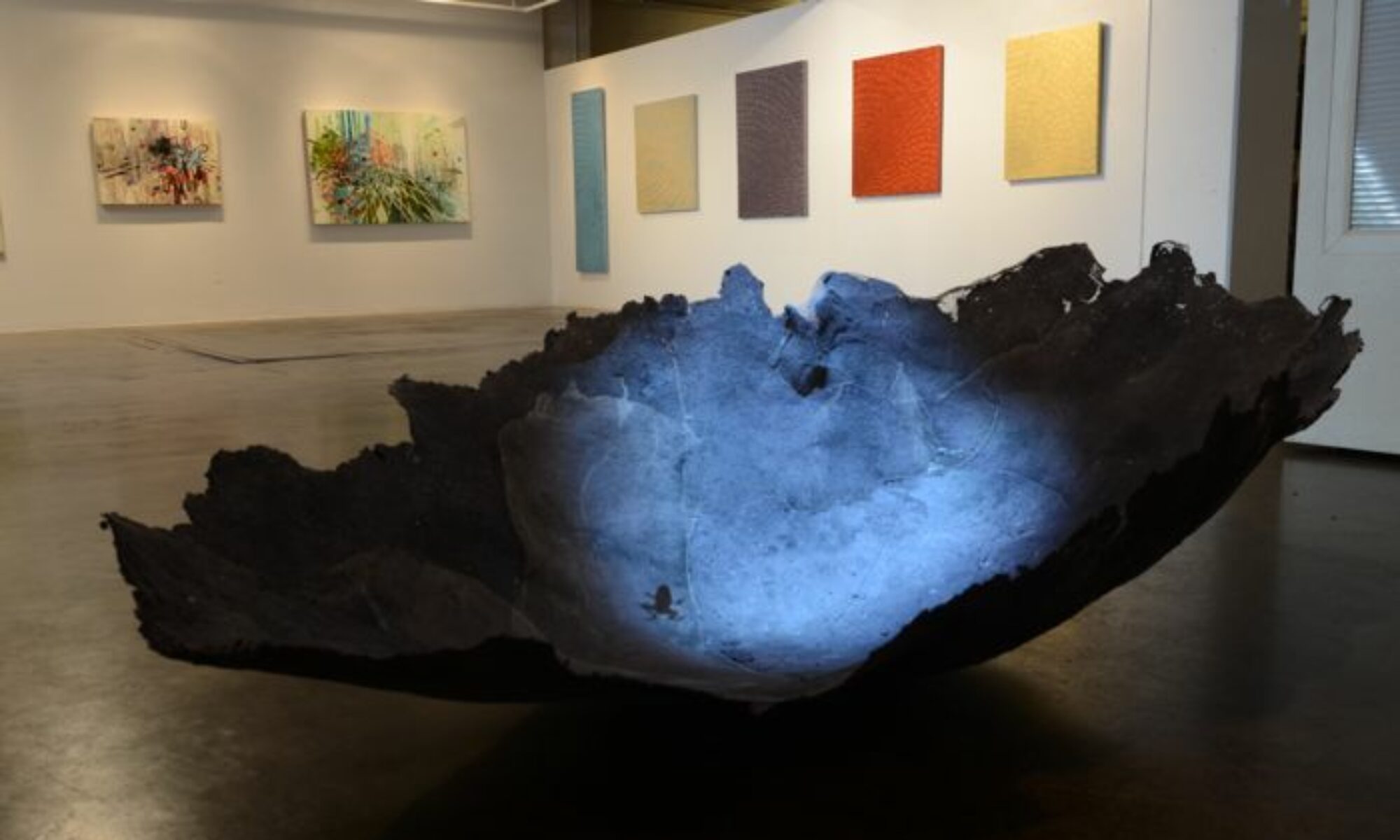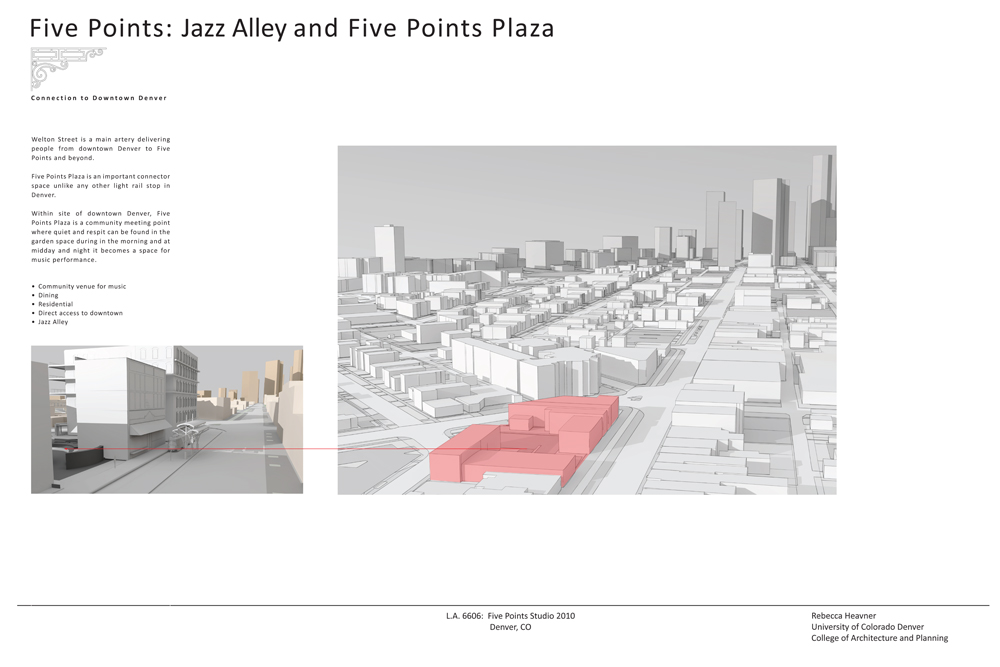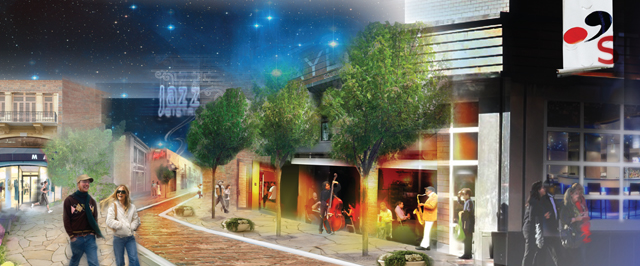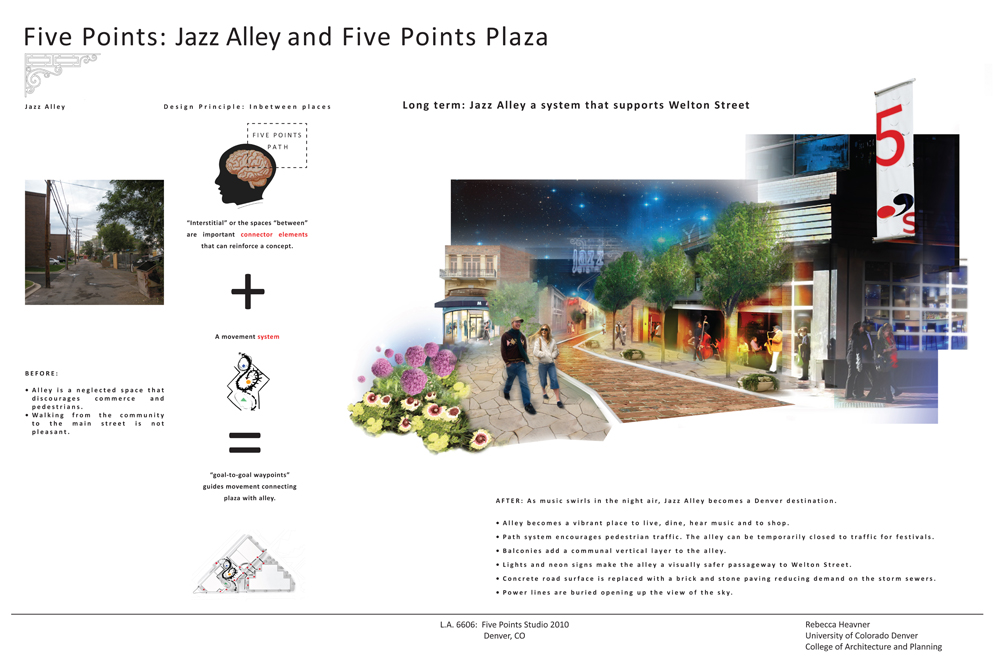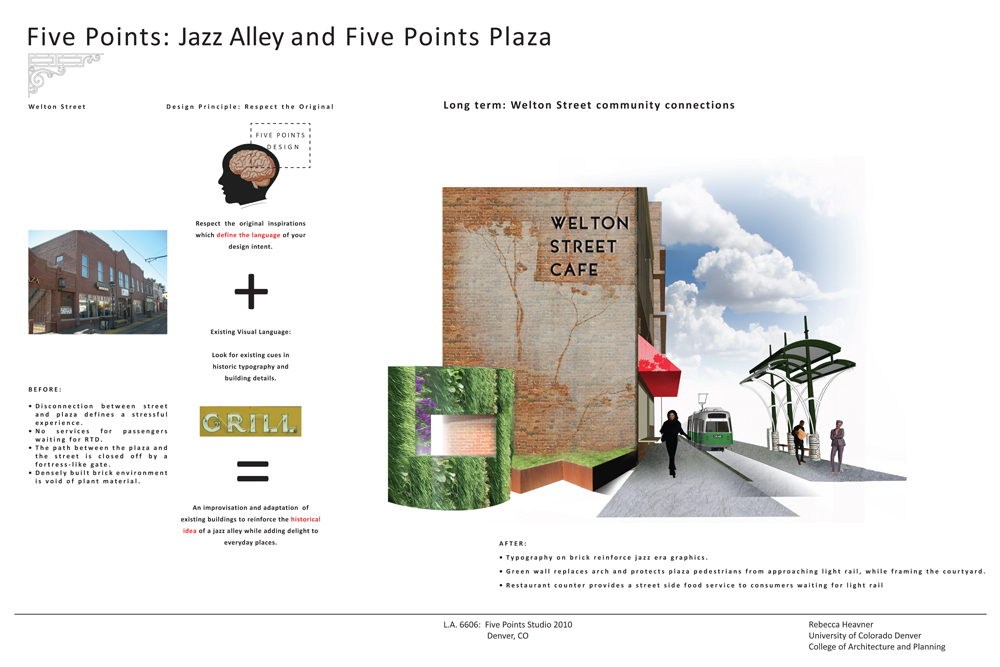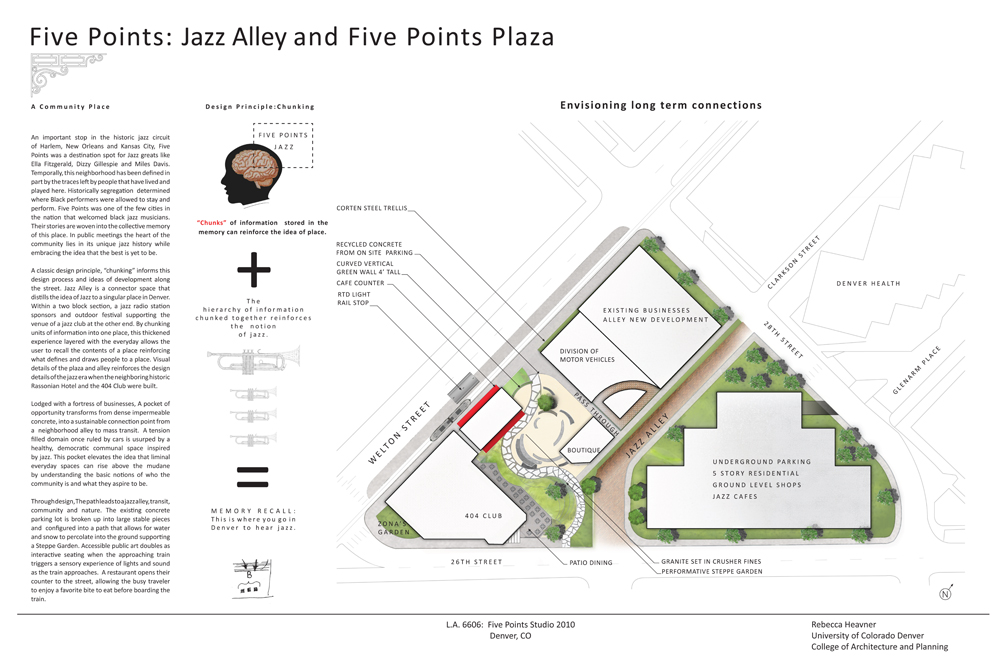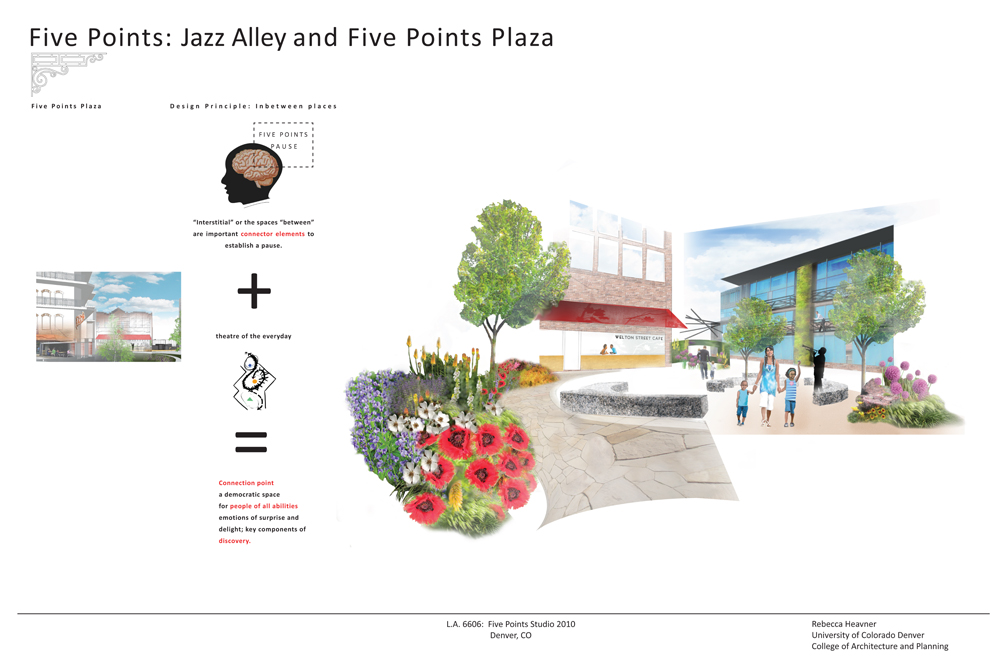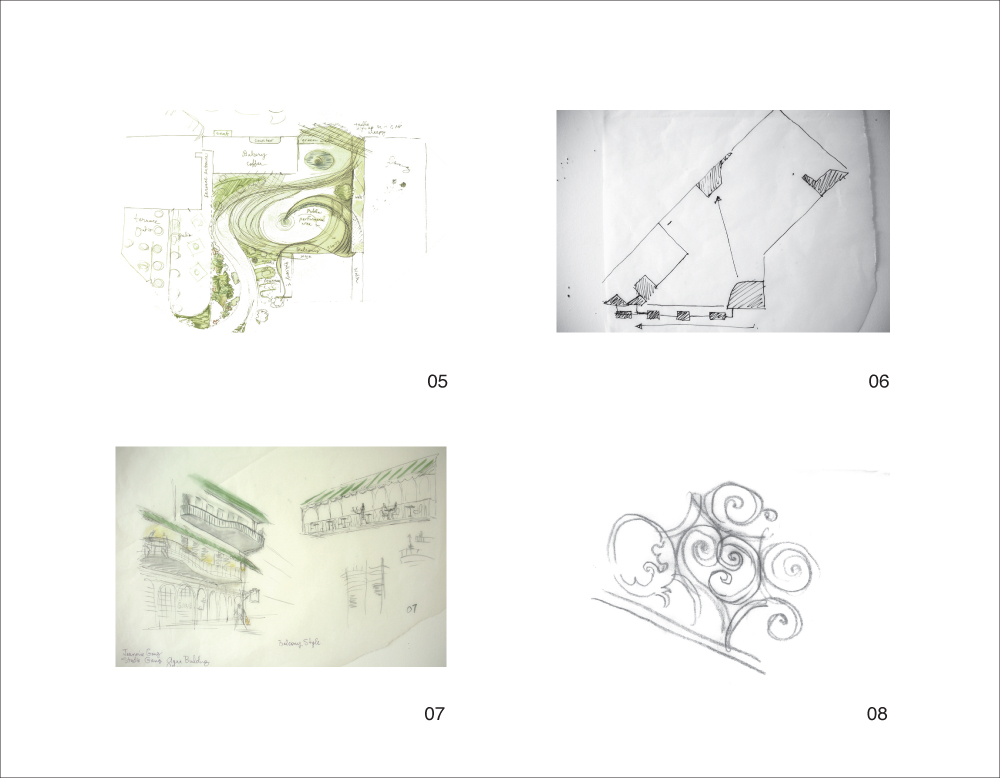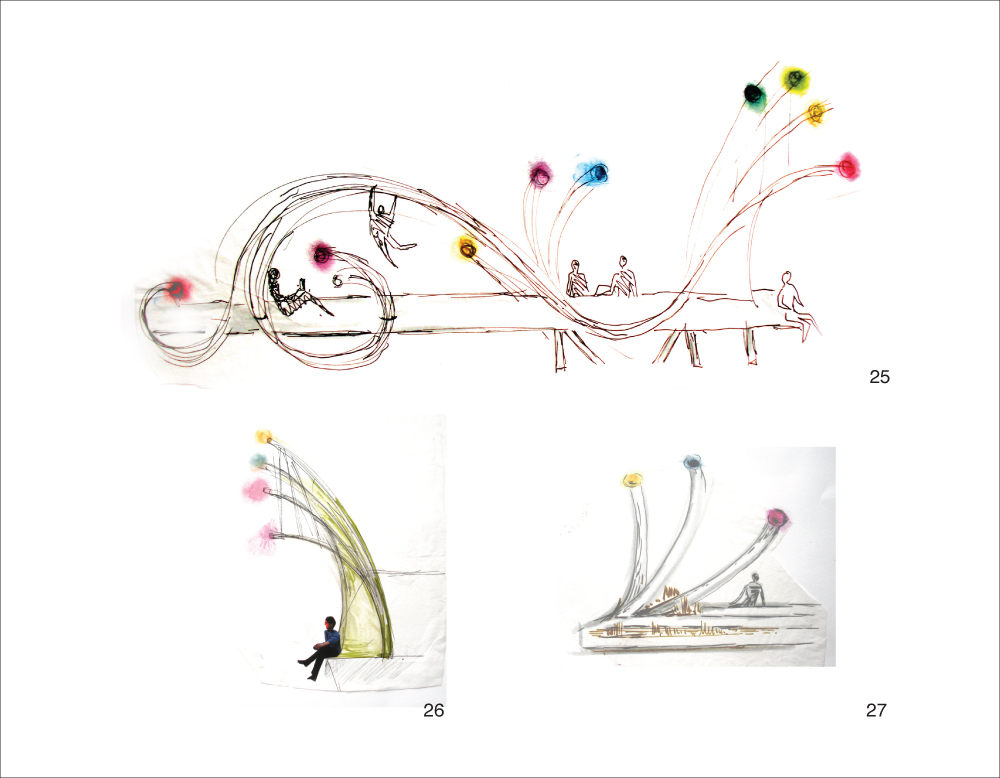Strengthening the main street with alley development
An important stop in the historic jazz circuit of Harlem, New Orleans and Kansas City, Five Points was a destination spot for Jazz greats like Ella Fitzgerald, Dizzy Gillespie and Miles Davis. Temporally, this neighborhood has been defined in part by the traces left by people that have lived and played here. Historically segregation determined where Black performers were allowed to stay and perform. Five Points was one of the few places in the nation that welcomed black jazz musicians. Their stories are woven into the collective memory of this place.
In public meetings the heart of the community lies in its unique jazz history while embracing the idea that the best is yet to be. A classic design principle, “chunking” informs this design process and ideas of development along the street. Jazz Alley is a connector space that distills the idea of Jazz to a singular place in Denver.Within a two block section, a jazz radio station sponsors and outdoor festival supporting the venue of a jazz club at the other end. By chunking units of information into one place, this thickened experience layered with the everyday allows the user to recall the contents of a place. Visual details of the plaza and alley reinforces the design details of the jazz era when the neighboring historic Rassonian Hotel and the 404 Club were built. Through design and ethnographic research a path reveals a jazz alley, transit, community and a steppe garden. The existing concrete parking lot is broken up into large stable pieces and configured into a path that allows for water and snow to percolate into the ground. Accessible public art doubles as interactive seating when the approaching train triggers a sensory experience of lights and sound as the train approaches. A restaurant opens their counter to the street, allowing the busy traveler to enjoy a favorite bite to eat before boarding the train. Professor: Heath Mizer
